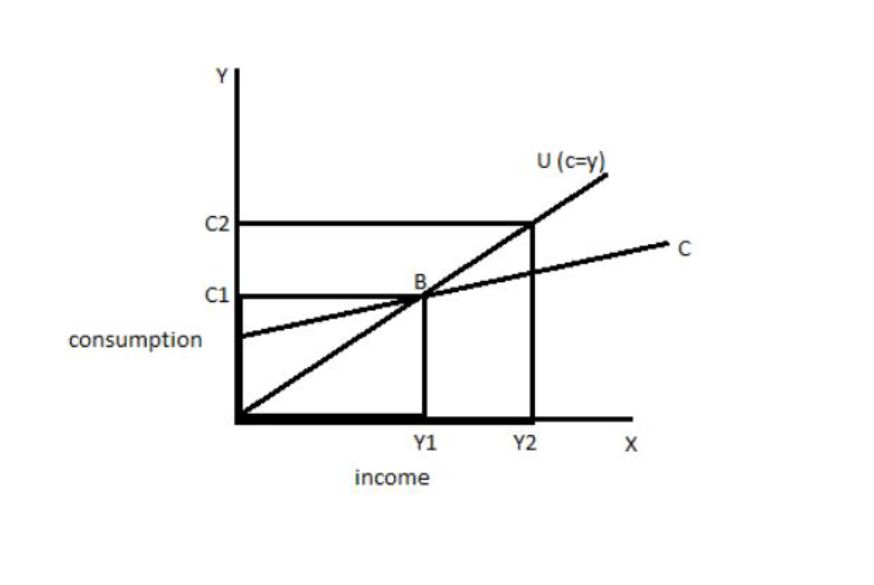Introduction:
The Keynesian concept of consumption function stems from the fundamental psychological law of consumption which states that there is a common tendency for people to spend more on consumption when income increases but not to the same extent as the rise in income because a part of the income is also saved thus community as a rule consumer as well as saves a larger amount with rising income thus Keynes psychological law of consumption is based on the following prepositions.
- When the total income of a community increases the consumption expenditure of the community will also increases but less proportionate
- It follows from this that an increase in income is always bifurcated into spending and savings
- An increase in income will thus lead to an increase in both consumption and savings.
Assumptions:
- Constancy of psychological and institutional factor: Propensity to consume will remain stable owing to the constancy of the existing psychological and institutional complexities influencing consumption expenditure.
- Normal economic conditions: General economic conditions are normal and there are no abnormal and extraordinary circumstances such as war, revolution, inflation etc.
- Laissez faire policy: It is assumed that their exist a free capitalist economy, in which there is no government restriction on consumption when income increases.
Law Implications:
- Highlighting the crucial importance of investment in an economy: The vital point in the law is the tendency of people not to spend on consumption the full amount of an increase in their income. There is thus a gap between aggregate income and aggregate consumption. Assuming the consumption function to be stable during short run period the gap will widen with increase in income. This gives rise to the problem of investment Keynes stresses that investment is the crucial and initiating determinant of level of income and employment.
- Refunding says law: It refutes says law of Market by indicating the demand deficiency possibility of over production.
- Explanation to the business cycle: An explanation of the turning point of a business cycle is also provided by this law. The law explains the revival of the marginal efficiency of capital and turning point of the recovery from a depression on the basis of the fact that when income is reduced consumption expenditure does not decrease in the same proportion.
The consumption function:
The consumption function or the propensity to consume is nothing but an expression of an empirical income consumption relationship in technical terms Keynes postulates that salaries consumption is a function of income.
Algebraically, the relationship between consumption as a dependent variable and total real income as a independent variable is expressed as
C=f(y): f>0
- Where c =real aggregate consumption expenditure
- y =total real income
- f =functional relationship
- f= >0 implies positive or direct relationship
The propensity to consume or the consumption function shows the relationship between aggregate real consumption and aggregate real income.
Schedule of the propensity to consume:
A schedule of the propensity to consume is a statement showing the functional relationship between the levels of consumption at each level of income, the schedule is as follows
| Income Y | Consumption C |
| 200 | 210 |
| 300 | 300 |
| 400 | 370 |
| 500 | 470 |
| 600 | 550 |
| 700 | 650 |
The first column indicates the various level of income; the second column shows the amount of real consumption expenditure at each level of income. it is the whole schedule relating to the various amount of consumption at various levels of income and is called the propensity to consume at the consumption function.

the C curve represent the consumption function of the capacity to consume. it moves upward to the right indicating the consumption increases as income increases. it should be notice that the C curve rises less steeply than the unity line after the intersection or breakeven point B. this shows that increase in consumption is smaller than the increase in income, increase in consumption C1 C2 is less than the increasing income Y1,Y2.
also read: explain the classical theory of employment.